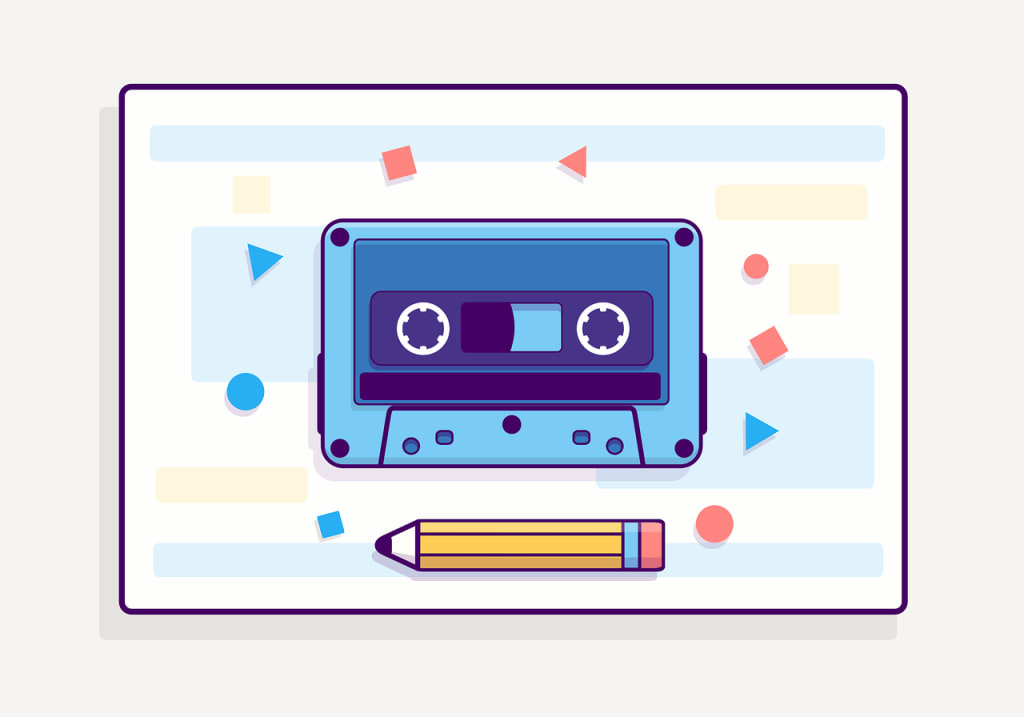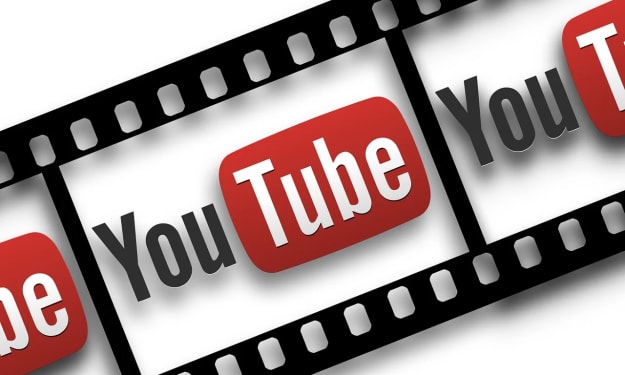The Journey of Music Distribution: From Vinyl to Digital Streaming
The music distribution landscape has evolved tremendously, from the nostalgic days of vinyl records to the current era dominated by digital streaming.

https://blog.delivermytune.com/how-has-music-distribution-changed-over-years/
The music distribution landscape has evolved tremendously, from the nostalgic days of vinyl records to the current era dominated by digital streaming. This article delves into the historical shifts and technological advancements that have shaped music distribution over the years. As we explore this journey, we'll see how each phase brought unique changes and challenges, transforming the way artists and audiences connect.
In the early days, music distribution was a physical endeavor, with records and cassettes being the primary formats. The advent of digital technology revolutionized this process, making music more accessible than ever before. Today, streaming services reign supreme, offering vast libraries of music at our fingertips. However, this evolution has also raised questions about the value of music and how artists are compensated in the digital age.
Vinyl Records and Their Golden Era
Vinyl’s Popularity:
Vinyl records were the cornerstone of music distribution in the mid-20th century. Introduced in the late 1940s, they quickly became the standard due to their superior sound quality and durability. Vinyl records offered a rich, warm sound that many music enthusiasts still prefer today. The act of placing a record on a turntable and lowering the needle was a ritual that created a deep connection between listeners and their music.
Cultural Impact:
Vinyl records were more than just a medium for music; they were cultural artifacts. Album covers became a form of art, with iconic designs that are still celebrated today. Vinyl collections were a source of pride, and record stores became community hubs where people gathered to discover and discuss new music. The tactile nature of vinyl, along with its superior sound quality, created a deep connection between listeners and their music.
Collectibility and Nostalgia:
Even as new technologies emerged, vinyl records maintained a loyal following. Collectors prized them for their tangible nature and the nostalgia they evoke. Limited edition releases, colored vinyl, and unique album art continue to attract collectors and music lovers alike. Today, vinyl has seen a resurgence, with sales increasing as new generations discover its unique appeal.
The Advent of Cassettes and CDs
Cassettes:
The 1970s saw the introduction of cassette tapes, which offered greater portability and convenience than vinyl records. Cassettes allowed music lovers to create personalized mixtapes, which became a popular way to share and enjoy music. The advent of the Walkman in 1979 further revolutionized music listening, enabling people to take their favorite tunes wherever they went. Despite their inferior sound quality compared to vinyl, cassettes' compact size and ease of use made them a significant player in the music industry.
Compact Discs:
The 1980s brought the compact disc (CD) revolution. CDs provided superior sound quality, greater durability, and ease of use compared to both vinyl records and cassettes. The digital format of CDs allowed for instant track access, and their portability made them a favorite among consumers. CD sales surged, leading to the growth of mega music stores and a boom in the music industry. The clarity of sound and the ability to include bonus tracks, multimedia content, and interactive features further enhanced the appeal of CDs. However, the high cost of CDs also sparked debates about affordability and access to music.
Impact on the Industry:
The rise of CDs marked a significant shift in the music industry. Record labels saw increased profits due to the higher price point of CDs compared to vinyl and cassettes. This period also saw the proliferation of big-box music retailers, which dominated the market. However, the high cost of CDs led to consumer backlash, and the industry had to navigate the delicate balance between profitability and accessibility.
The Digital Disruption: MP3s and File Sharing
MP3 Format:
The late 1990s marked the beginning of the digital revolution in music distribution with the introduction of the MP3 format. MP3s allowed for high-quality audio compression, enabling thousands of songs to be stored on a single device. This innovation transformed the way people accessed and enjoyed music, offering unprecedented convenience and portability. The ability to easily share MP3 files also contributed to the format's popularity. MP3s reduced the need for physical storage, making music more accessible and mobile than ever before.
Napster and File Sharing:
Napster, launched in 1999, became synonymous with the rise of file sharing. It allowed users to share and download music for free, bypassing traditional distribution channels. Napster's peer-to-peer network facilitated the rapid spread of digital music, but it also led to significant legal challenges from the music industry. While Napster was eventually shut down, it set the stage for the broader digital music revolution and forced the industry to adapt to new distribution methods. The advent of file-sharing networks highlighted the need for new business models and legal frameworks to accommodate the digital age.
Impact on the Industry:
Napster's impact on the music industry was profound. The ease with which music could be shared and downloaded disrupted traditional revenue models, leading to a decline in physical sales. The industry responded with lawsuits and efforts to shut down illegal file sharing, but the genie was already out of the bottle. The digital revolution had fundamentally changed the way people accessed music, paving the way for new distribution models. This period also marked the beginning of a shift in consumer behavior, with more emphasis on digital ownership and access.
The Shift to Legal Digital Downloads
iTunes:
In response to the proliferation of illegal file sharing, legal download services emerged. Apple's iTunes, launched in 2001, became the gold standard for digital music purchases. iTunes offered a legal and convenient way for consumers to buy individual songs or albums, significantly reducing the appeal of illegal downloads. The introduction of digital rights management (DRM) aimed to protect artists' rights but also faced criticism for restricting user freedom. iTunes revolutionized the way music was sold and consumed, introducing features like single-track purchases and comprehensive digital libraries.
Impact on Consumer Behavior:
The success of iTunes marked a shift in consumer behavior, with people becoming more accustomed to buying and owning digital music. The ability to purchase individual tracks rather than entire albums changed the dynamics of music consumption, allowing consumers greater freedom and flexibility. This period also saw the rise of digital music libraries, with users curating their own collections of favorite songs and albums.
Streaming Services Take Over
The Birth of Streaming:
The mid-2000s saw the rise of streaming services, which further transformed music distribution. Spotify, launched in 2008, and Apple Music, launched in 2015, led the way. These platforms offered users access to vast libraries of music for a monthly subscription fee, making it unnecessary to purchase individual songs or albums. The convenience and affordability of streaming services quickly made them the preferred choice for many music consumers. Streaming services also introduced new revenue models for artists and labels, although the debate over fair compensation for artists continues. The shift to streaming represented a fundamental change in how people valued and accessed music, with emphasis on access over ownership.
Impact on Artists and Labels:
While streaming services provided users with unprecedented access to music, they also significantly altered revenue models for artists and labels. The shift from album sales to streaming revenue meant that artists had to adapt to new ways of generating income, such as live performances, merchandise sales, and licensing deals. The debate over fair compensation for artists in the streaming era continues, with many arguing that current payout models favor record labels over individual musicians. Streaming services have democratized access to music but also created challenges in terms of revenue distribution and artist recognition.
Social Media and Modern Music Discovery
YouTube and TikTok:
In the age of social media, platforms like YouTube and TikTok have become pivotal in music discovery. Viral challenges and trends can propel songs to global popularity overnight. For instance, Lil Nas X's "Old Town Road" became a worldwide hit after gaining traction on TikTok. Social media platforms provide artists with direct access to their audience, allowing for more personal engagement and the potential for grassroots promotion. Independent artists can now achieve fame and success without the backing of major labels, thanks to the viral nature of these platforms.
Algorithmic Playlists:
Streaming services use sophisticated algorithms to curate personalized playlists for users. These algorithms analyze listening habits to recommend new music, creating a tailored experience that keeps users engaged. While this has the benefit of helping users discover new artists and genres, it also raises concerns about the homogenization of music and the potential for lesser-known artists to be overshadowed by algorithmic preferences. The balance between algorithmic efficiency and the serendipity of human-curated playlists remains a topic of ongoing debate.
Impact on Music Discovery:
Social media and algorithmic curation have fundamentally changed how people discover and consume music. The ability to instantly share and discover new music has created a more dynamic and interactive music landscape. However, it has also introduced challenges related to information overload and the potential for manipulation of algorithms to favor certain content.
The Future of Music Distribution
Technological Innovations:
Looking ahead, technological innovations will continue to shape music distribution. Virtual and augmented reality experiences, blockchain technology for transparent and fair artist compensation, and advancements in artificial intelligence for music creation and curation are all areas of potential growth. These technologies promise to further revolutionize how we interact with and consume music, offering new ways to experience and share our favorite tunes. Innovations in immersive and interactive experiences are likely to create new opportunities for artists and fans alike.
Cultural Shifts:
Cultural shifts will also play a significant role in the future of music distribution. The increasing demand for authenticity and direct artist-to-fan connections is likely to drive changes in how music is marketed and shared. Additionally, the growing awareness of environmental sustainability may lead to new, eco-friendly approaches to music production and distribution. As the industry continues to evolve, the focus will likely shift towards more ethical and sustainable practices. The future of music distribution will be shaped by a combination of technological advancements and changing cultural values.
Conclusion:
The journey of music distribution has been marked by continuous innovation and adaptation. From physical media to digital streaming, each era has brought new ways for us to enjoy music. The transition from vinyl records to streaming services highlights the music industry's resilience and adaptability. As we look to the future, it's clear that music distribution will continue to evolve, driven by technological innovation and the ever-changing preferences of listeners.
The landscape of music distribution is more dynamic than ever, with new technologies and cultural trends constantly reshaping how we access and enjoy music. As consumers, we benefit from greater choice and convenience, while artists have more tools at their disposal to reach and engage with their audience. The future promises even more exciting developments, making it an exhilarating time for music lovers and creators alike.
About the Creator
Enjoyed the story? Support the Creator.
Subscribe for free to receive all their stories in your feed. You could also pledge your support or give them a one-off tip, letting them know you appreciate their work.






Comments
There are no comments for this story
Be the first to respond and start the conversation.